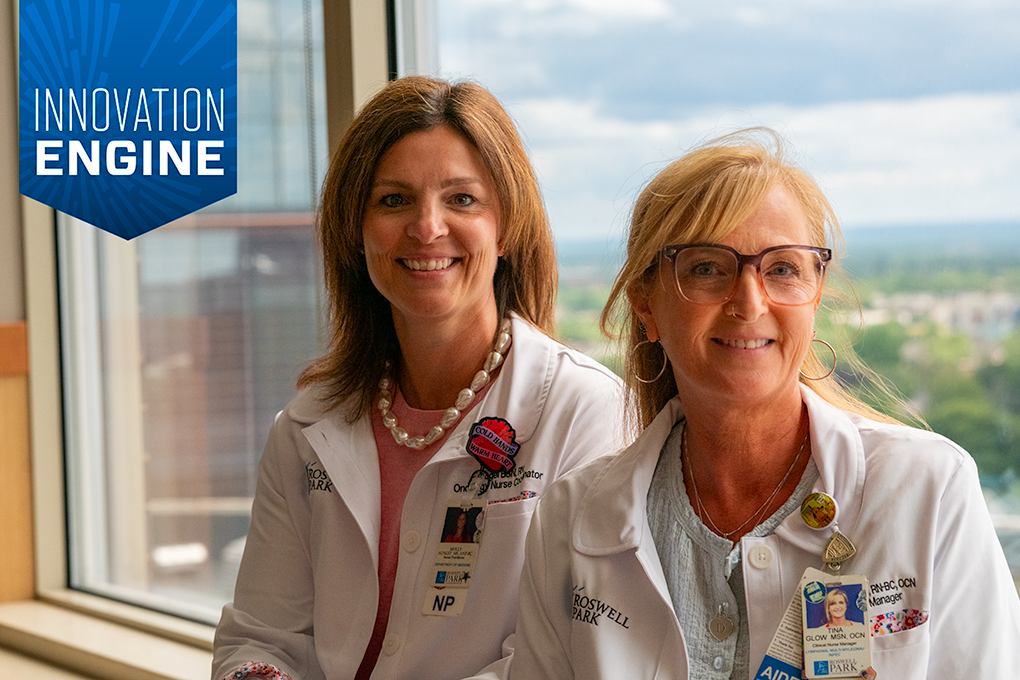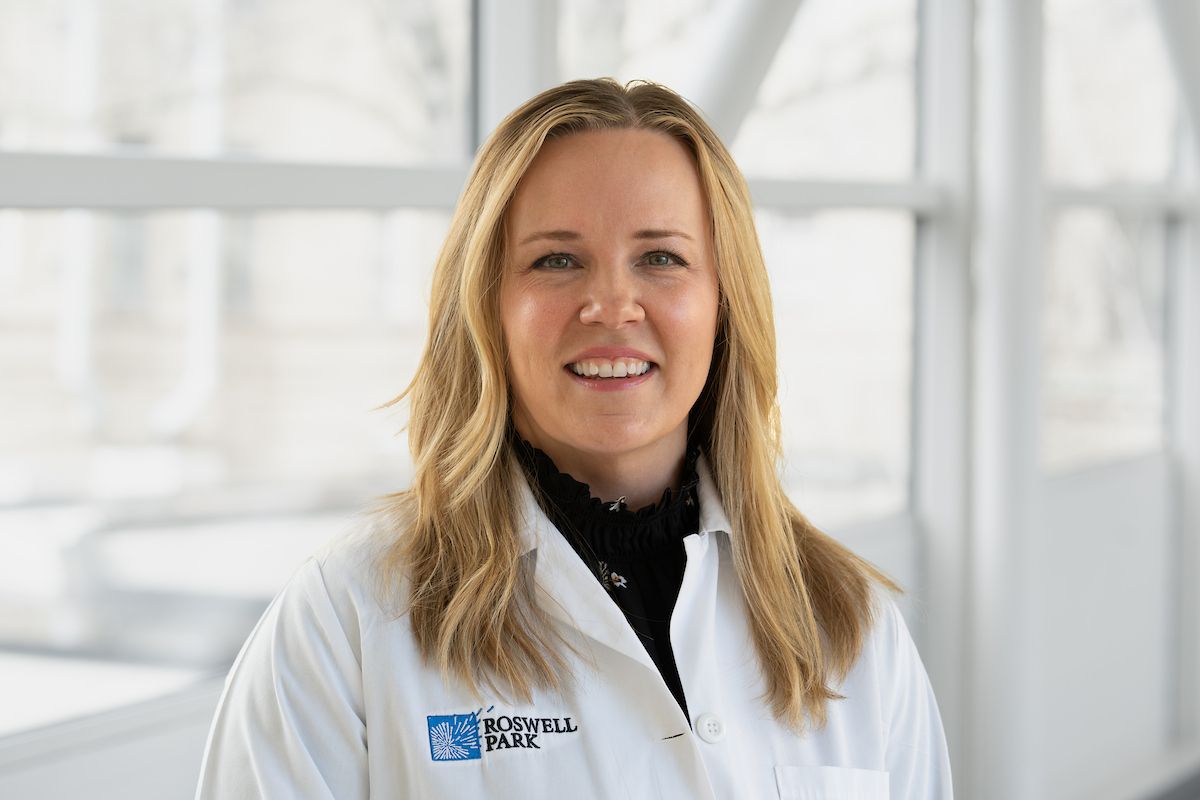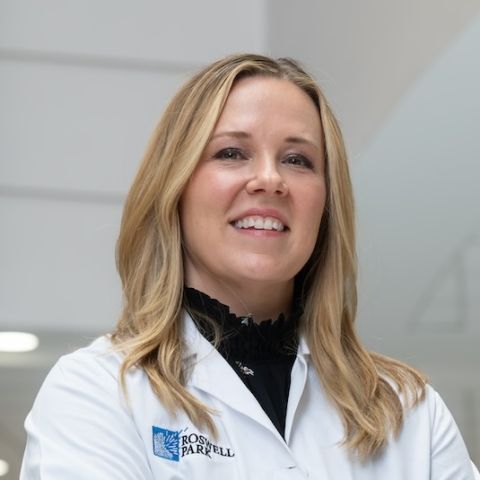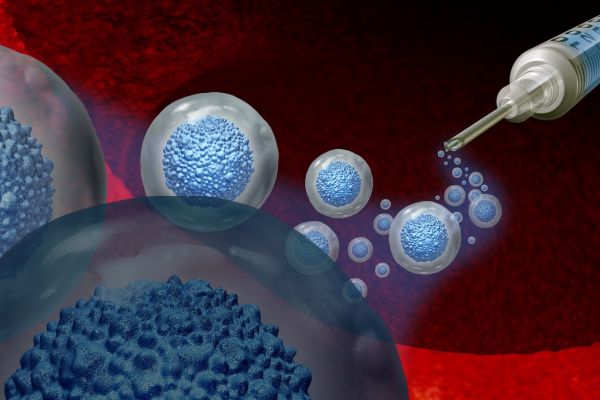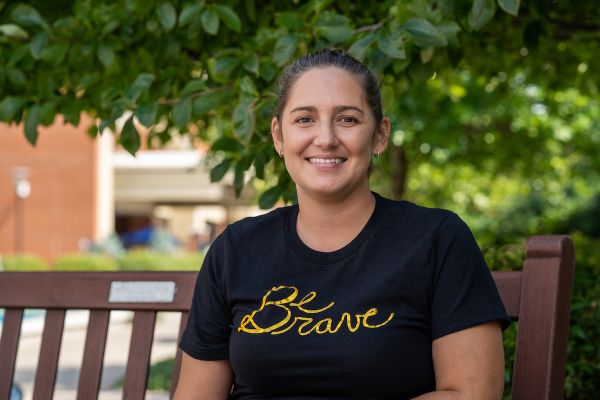Research led by Dr. Shernan Holtan makes early discharge safer
Most Roswell Park Comprehensive Cancer Center patients treated with stem cell transplant can now leave the hospital weeks earlier than they could have in the past — and for many, that means a quicker recovery in the comfort of home. “When people are able to go home, generally they eat better, their muscles are stronger, and overall they’re in better shape, both mentally and physically,” says Shernan Holtan, MD, Chief of Blood and Marrow Transplantation at Roswell Park.
For patients who undergo a stem cell transplant involving a donor, early discharge is possible because research led nationally by Dr. Holtan has dramatically reduced the risk of graft-versus-host disease (GVHD) — a potentially fatal complication that occurs when donor cells view the patient’s cells as foreign and attack them.
A dramatic decrease in complications
Acute GVHD usually develops in the first 100 days after treatment. That’s why, until recently, patients were hospitalized for as long as six weeks and then had to spend those 100 days living close to the hospital so their medical team could step in quickly if complications arose. It meant a long period of separation from loved ones, disruption of work and other activities, and — for patients from out of town — expenses for temporary lodging in the Buffalo area.
But as Principal Investigator of several major clinical trials, Dr. Holtan helped identify a way to dramatically reduce the risk of GVHD by adding the chemotherapy cyclophosphamide to other GVHD-prevention drugs given to patients after transplant. The new practice helped drive GVHD risk below 15% and the risk of fatal GVHD to less than 1%. Now, with one of the world’s highest survival rates for stem cell transplant, Roswell Park’s 100-day rule has shrunk to 60 days, and looks to reduce this requirement even more in the future.
The benefits of early discharge also can benefit patients who receive other types of cellular therapy — for example, those who receive their own stem cells during an autologous stem cell transplant or their own T cells during CAR T-cell or tumor-infiltrating lymphocyte (TIL) therapy. They may face serious post-treatment challenges such as low appetite, intestinal upset, heart problems, and an increased risk of infection due to a suppressed immune system or a complication called cytokine release syndrome. But newer treatment regimens, improved patient/donor matching and other advances have significantly reduced those risks as well.
Why choose Roswell Park for your stem cell transplant?
A stem cell or bone marrow transplant is an aggressive and complex procedure that requires the expertise of oncologists who specialize in delivering transplant treatments and preventing and managing side effects.
Immediate access to care, 24/7
Nurse practitioner Molly Aungst, RN, NP, in the Transplant and Cellular Therapy Center, has worked with transplant patients for most of her 20-year career. She proposed adding another patient safeguard that’s unique to Roswell Park — two dedicated beds for cellular therapy patients who need to be readmitted to the hospital for post-treatment complications. "When those patients call, we can see them immediately,” she says.
The new system helps ensure that those who need care urgently won’t wind up in an emergency room, away from the highly specialized care they need from Roswell Park. “These patients have very low immune system function for a period of time, so we take any fever or complication very seriously,” says Dr. Holtan. “We want them to be able to come in with absolutely no barriers that could slow things down. They can call us at any hour and speak directly to a live person.”
She adds that the nursing team has been critical to the program’s success, citing the leadership of Aungst and Tina Glow, MSN, RN-BC, OCN, Clinical Nurse Manager of the Transplant & Cellular Therapy Center. “They have played a crucial role in transforming nursing practice to meet the needs of patients in the Early Discharge Program,” she says.
While some patients feel nervous about early discharge from the hospital, Aungst says she and her team work with them to ensure that they’re comfortable with the timeline. “Sending somebody home who doesn’t want to go isn’t helping anyone. They’re just going to bounce back. That’s why the team focuses on clear communication, personalized care plans and thorough education — so patients feel confident, supported and ready to heal in the comfort of home. Many even tell us they rest better once they’re back in their own space.”
While the majority of patients are eligible for early discharge, Aungst cautions that not everyone is a candidate: patients need to get the all-clear on several medical assessments. “We want to make sure people are fit,” she explains. “For example, if you have a cardiac condition where things can change quickly, we’re going to keep you in the hospital until we can discharge you safely.”
“If patients can take advantage of early discharge, it’s in their best interest,” adds Dr. Holtan. “It’s better for you — it really is. Longer hospitalization is costly and can be demoralizing. We’re doing whatever we can to whittle away at that time, to get people home sooner.”
New approach helpful for patients who travel to Roswell Park
She hopes early discharge will enable some patients to reconsider the possibility of cellular therapies that they might have dismissed before. “Chemotherapy drugs can sometimes control the cancer, but a lot of times what we’re offering is a chance at a cure,” she says. “There may be some inconvenience, but the hope of a long-term remission or cure might be worth a couple of weeks in Buffalo.”
